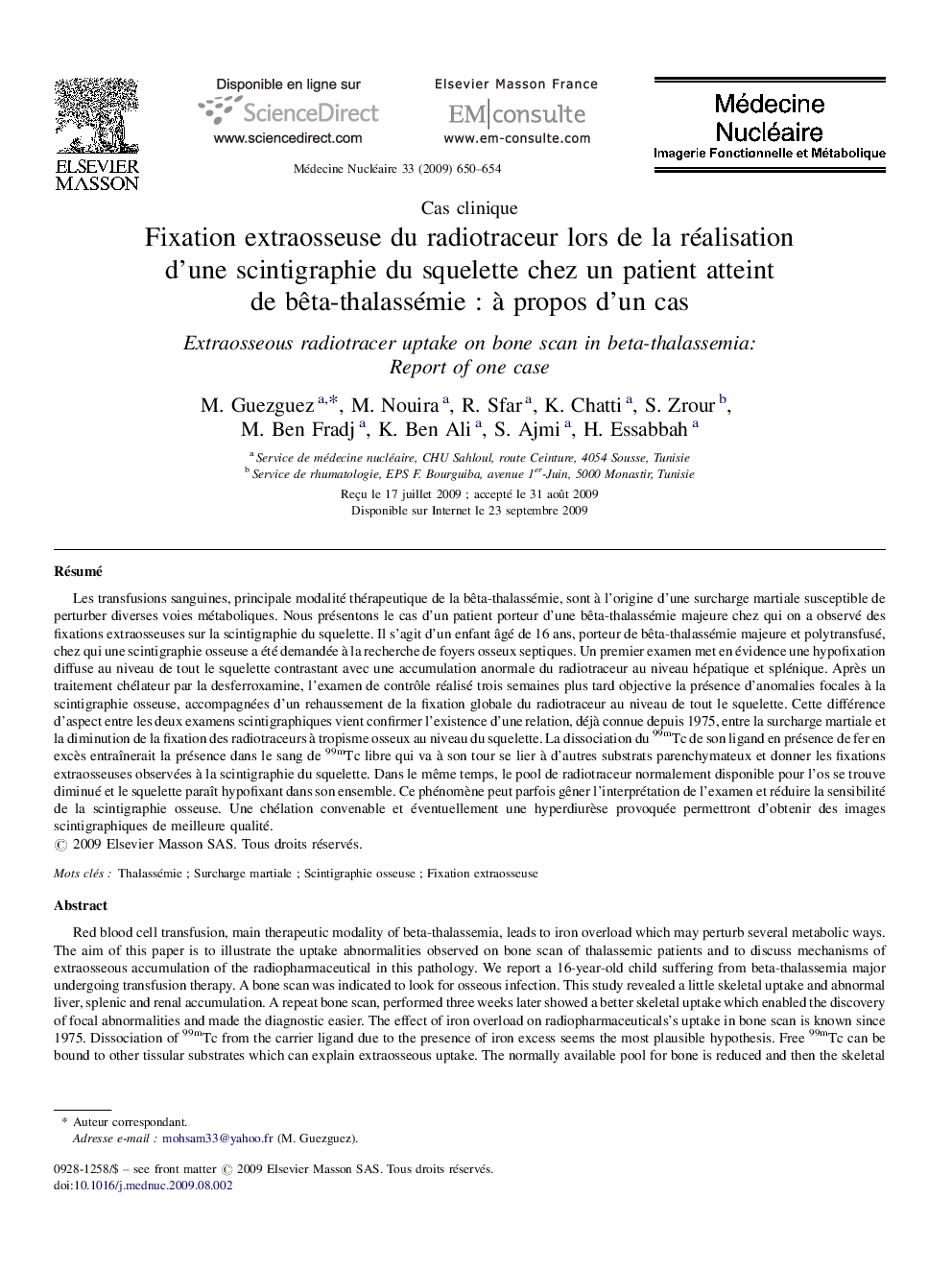| Article ID | Journal | Published Year | Pages | File Type |
|---|---|---|---|---|
| 4244428 | Médecine Nucléaire | 2009 | 5 Pages |
Abstract
Red blood cell transfusion, main therapeutic modality of beta-thalassemia, leads to iron overload which may perturb several metabolic ways. The aim of this paper is to illustrate the uptake abnormalities observed on bone scan of thalassemic patients and to discuss mechanisms of extraosseous accumulation of the radiopharmaceutical in this pathology. We report a 16-year-old child suffering from beta-thalassemia major undergoing transfusion therapy. A bone scan was indicated to look for osseous infection. This study revealed a little skeletal uptake and abnormal liver, splenic and renal accumulation. A repeat bone scan, performed three weeks later showed a better skeletal uptake which enabled the discovery of focal abnormalities and made the diagnostic easier. The effect of iron overload on radiopharmaceuticals's uptake in bone scan is known since 1975. Dissociation of 99mTc from the carrier ligand due to the presence of iron excess seems the most plausible hypothesis. Free 99mTc can be bound to other tissular substrates which can explain extraosseous uptake. The normally available pool for bone is reduced and then the skeletal uptake decreased. This report limits considerably the sensitivity of the bone scan. A well-led iron chelation and eventually the use of diuretic drug may guarantee a better quality of bone scan images.
Related Topics
Health Sciences
Medicine and Dentistry
Radiology and Imaging
Authors
M. Guezguez, M. Nouira, R. Sfar, K. Chatti, S. Zrour, M. Ben Fradj, K. Ben Ali, S. Ajmi, H. Essabbah,
